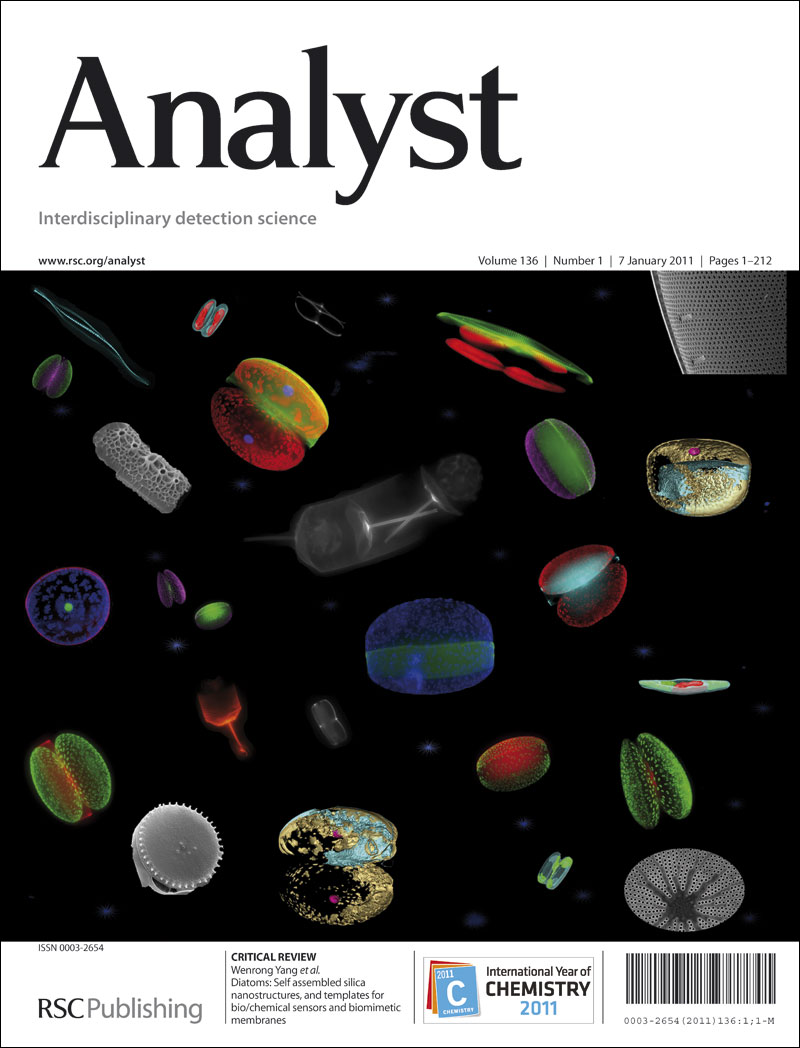Rationally engineering recognition group to construct a two-photon reaction-based fluorescent probe for rapid and selective sensing of cysteine
IF 3.6
3区 化学
Q2 CHEMISTRY, ANALYTICAL
引用次数: 0
Abstract
It is highly requested to rationally design fluorescent probes with desired analytical performances for the applications in sensing and imaging through molecular engineering strategy. The reaction-based fluorescent probes for highly selective sensing of cysteine (Cys) are mainly based on Cys-participated addition-cyclization with acrylates, cyclization with aldehydes, coordination displacement, Michael addition reaction, and cleavage reaction. Cys-triggered reaction with “O” ether bond has also been used to construct the reaction-based fluorescent probe based on the substitution of the ether with the nucleophilic thiolate of Cys. However, many of the developed probes still suffer from long response time, interfering from homocysteine (Hcy) and glutathione (GSH), high background fluorescence, and lack of two-photon absorption (TPA) properties. Herein, we successfully design a Cys-sensitive two-photon fluorescent probe (F-BTD) using a donor-acceptor-donor (D-A-D) type π-extended benzothiadiazole framework as the fluorophore, while nitrobenzofuran (NBD) as the recognition unit. The proposed F-BTD probe displays some advantages including rapid response, high selectivity, low background, and two-photon imaging capability. The F-BTD probe is applied to two-photon fluorescence imaging of endogenous and exogenous Cys in HeLa cells with satisfactory results. For comparing, commonly used recognition groups of biothiol including 2,4-dinitrobezensulfonyl and 2,4-dinitrophenyl are also used to construct S-BTD and N-BTD probes, respectively. The responsive mechanism of F-BTD to Cys is studied in detail through the kinetic studies and transition-state analysis. This study may provide an example to design fluorescent probe with desired analytical performances by taking recognition group into consideration as an important index.合理设计识别组,构建基于双光子反应的半胱氨酸快速选择性检测荧光探针
通过分子工程策略,合理设计具有良好分析性能的荧光探针,是传感和成像领域应用的迫切要求。高选择性检测半胱氨酸(Cys)的反应型荧光探针主要基于Cys参与的与丙烯酸酯的加成-环化、与醛的环化、配位位移、Michael加成反应和裂解反应。Cys引发的与“O”醚键的反应也被用于构建基于Cys亲核硫酸盐取代醚的反应型荧光探针。然而,目前开发的探针存在响应时间长、受同型半胱氨酸(Hcy)和谷胱甘肽(GSH)干扰、背景荧光高、缺乏双光子吸收(TPA)特性等问题。本文以给体-受体-给体(D-A-D)型π扩展苯并噻唑骨架为荧光基团,以硝基苯并呋喃(NBD)为识别单元,成功设计了一种cys敏感双光子荧光探针(F-BTD)。该探针具有快速响应、高选择性、低背景和双光子成像能力等优点。将F-BTD探针应用于HeLa细胞内源性和外源性Cys的双光子荧光成像,结果令人满意。为了比较,我们还利用生物硫醇常用的识别基团2,4-二硝基苯磺酰基和2,4-二硝基苯基分别构建了S-BTD和N-BTD探针。通过动力学研究和过渡态分析,详细研究了F-BTD对Cys的响应机理。本研究为以识别基团为重要指标设计具有理想分析性能的荧光探针提供了范例。
本文章由计算机程序翻译,如有差异,请以英文原文为准。
求助全文
约1分钟内获得全文
求助全文
来源期刊

Analyst
化学-分析化学
CiteScore
7.80
自引率
4.80%
发文量
636
审稿时长
1.9 months
期刊介绍:
"Analyst" journal is the home of premier fundamental discoveries, inventions and applications in the analytical and bioanalytical sciences.
 求助内容:
求助内容: 应助结果提醒方式:
应助结果提醒方式:


